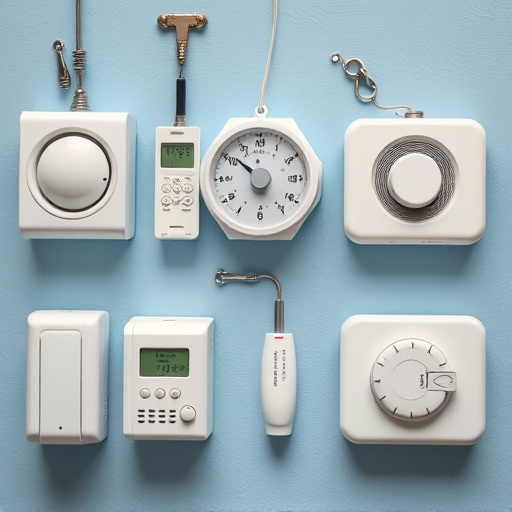Mobile panic button alarm systems offer discreet and quick emergency signals through personalized high-decibel (100-120 dB) sounds, with coverage areas ranging from 30-100 meters. These compact devices, featuring mobile apps, allow users to set response profiles. Coverage area varies, with Bluetooth for localized protection and cellular networks for broader reach, making them ideal for outdoor activities and remote locations. Timely responses are ensured by sending alerts to emergency contacts and services, emphasizing their value for individuals in potentially hazardous situations, including solo activities or special needs.
“Mobile panic button alarm systems are transforming personal safety, especially in our increasingly mobile society. This comprehensive guide explores the intricate world of these innovative devices, shedding light on their key components and features, including powerful Personal Alarm Sounds designed to attract attention.
We’ll delve into defining factors like Coverage Area and Signal Range, highlighting how these systems empower users with peace of mind. Furthermore, we’ll uncover diverse Use Cases, demonstrating the versatility of emergency mobile alarm devices in various scenarios.”
- Understanding Mobile Panic Button Alarm Systems
- Key Components and Features of a Personal Alarm Sound
- Defining Coverage Area and Signal Range
- Benefits and Use Cases for Emergency Mobil Alarm Devices
Understanding Mobile Panic Button Alarm Systems
Mobile panic button alarm systems are designed to provide individuals with a quick and discreet way to signal for help in emergency situations. These compact devices, often resembling a smartphone or wearable gadget, offer a personal alarm sound that can be triggered manually or automatically when sensing certain dangers, such as falls or unexpected movements. The system typically includes a mobile app that allows users to set up personalized response profiles, defining the desired action and communication method upon activation.
The coverage area of these systems varies based on technological advancements and specific models. Some operate within Bluetooth range, offering localized protection ideal for personal use or within a confined space. Others utilize cellular networks, providing broader coverage suitable for outdoor activities or travel. The ability to send alerts to emergency contacts, local authorities, or pre-designated support services ensures timely response, making these systems invaluable for individuals who frequently find themselves in remote or potentially hazardous locations.
Key Components and Features of a Personal Alarm Sound
A personal alarm sound is a crucial component that sets these devices apart, offering users a sense of security and an effective deterrent. The key is to choose a tone that is loud, distinct, and easily recognizable as an alert or distress signal. Typically, personal alarms employ high-decibel sounds ranging from 100 to 120 decibels, ensuring the noise attracts immediate attention. These alarms often feature various sound patterns or combinations to differentiate between different types of alerts, such as a general panic signal or a specific emergency call for help.
The coverage area is another essential factor, as personal alarms are designed to provide protection in close proximity to the user. They typically offer a range of 30-100 meters (or 100-328 feet), depending on the power output and environment. This ensures that the alarm can be heard loud and clear within a reasonable distance, allowing users to attract attention and potentially deter potential threats.
Defining Coverage Area and Signal Range
Defining the coverage area and signal range is a critical aspect of any personal alarm sound system, ensuring its effectiveness in emergency situations. The coverage area refers to the geographical space where the alarm’s signal can be detected and activated. This typically includes an individual’s home, workplace, or specific outdoor areas they frequently visit. Understanding this range allows users to place alarms strategically, knowing their safety net extends to a defined zone.
Signal range, on the other hand, determines how far the personal alarm sound can travel, usually measured in meters or feet. Advanced systems offer adjustable ranges, allowing users to customize their protection based on their environment. A broader signal range is advantageous for outdoor activities or areas with potential risks, ensuring assistance arrives promptly even at a distance.
Benefits and Use Cases for Emergency Mobil Alarm Devices
Mobile panic button alarm systems offer a range of benefits, especially in emergency situations. These devices provide personal alarm sound coverage area, ensuring users can quickly alert authorities or loved ones when facing danger. Whether it’s a sudden attack, loss of orientation, or getting stuck in an unfamiliar place, these alarms offer peace of mind by enabling immediate assistance.
Use cases vary from daily commuting and solo outings to outdoor adventures and remote work scenarios. For instance, hikers or cyclists can activate the alarm upon encountering an unexpected hazard, while individuals with special needs or those living alone can use it as a personal safety net during daily activities. The versatility of these devices makes them invaluable tools for anyone seeking enhanced security and rapid response in case of emergencies.
Mobile panic button alarm systems, with their integrated personal alarm sound and expansive coverage area, offer unparalleled peace of mind. By understanding the key components, defining signal ranges, and recognizing diverse use cases, individuals can leverage these devices effectively during emergencies. With continuous technological advancements, ensuring safety has never been more accessible, empowering folks to take control of their well-being.
